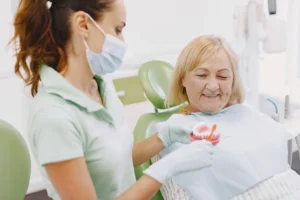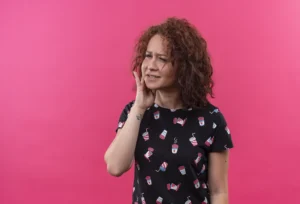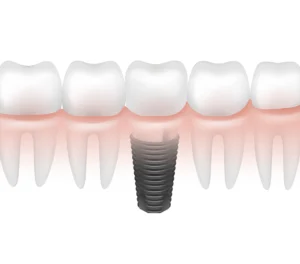Table of Contents
Brushing your teeth is a fundamental part of any oral care routine, but it’s often taken for granted. While most of us have been taught how to brush from a young age, not everyone follows the correct techniques or understands the full benefits of this simple habit. At Hardin Family Dental, we believe that effective brushing is crucial to maintaining a healthy smile, preventing tooth decay, and keeping your gums in top shape. In this article, we’ll explore how to brush your teeth correctly, why it’s essential, and the benefits of choosing the right toothbrush.
Why Brushing is Important
Brushing your teeth is more than just a way to freshen your breath; it’s essential for your overall oral health. Here’s why brushing is so important:
1. Removes Plaque and Bacteria
Throughout the day, food particles and bacteria accumulate on your teeth, forming a sticky film known as plaque. Plaque harbors harmful bacteria that produce acids, which can erode your tooth enamel and lead to cavities. Brushing removes this plaque, preventing it from hardening into tartar—a stubborn deposit only a dentist can remove.
2. Prevents Gum Disease
Gum disease, or gingivitis, starts with plaque buildup along the gumline. If left untreated, gingivitis can progress to periodontitis, a more severe form of gum disease that can lead to tooth loss. Regular brushing keeps your gums healthy by preventing the buildup of bacteria and reducing the risk of inflammation.
3. Prevents Bad Breath
Nobody likes bad breath! When food particles are left to decompose in your mouth, they can produce an unpleasant odor. Regular brushing not only removes food particles but also helps to keep your breath fresh.
4. Improves Overall Health
Good oral hygiene is linked to overall health. Studies show that poor oral hygiene is associated with conditions such as heart disease, diabetes, and respiratory infections. Brushing twice daily can lower your risk of these conditions, supporting your general well-being.
Choosing the Right Toothbrush
Before we dive into how to brush your teeth, let’s discuss one of the most essential tools for maintaining oral hygiene: the toothbrush.
Manual vs. Electric Toothbrush
Both manual and electric toothbrushes are effective at removing plaque if used correctly. However, electric toothbrushes can make brushing easier, as they often come with timers and oscillating heads that ensure a thorough clean. If you have difficulty brushing effectively, an electric toothbrush may be a good option.
Soft Bristles are Best
When choosing a toothbrush, opt for one with soft bristles. Hard bristles can damage your gums and enamel, leading to sensitivity. Soft bristles are gentle on your teeth and gums, yet effective at removing plaque.
Replace Your Toothbrush Regularly
Toothbrushes wear out over time and lose their effectiveness. Hardin Family Dental recommends replacing your toothbrush every three to four months or sooner if the bristles are frayed. A worn-out toothbrush can’t clean your teeth properly and may even harbor bacteria.
How to Brush My Teeth: Proper Technique
Brushing may seem simple, but using the right technique is crucial for getting the most out of your oral hygiene routine. Follow these steps to ensure effective brushing:
- Hold Your Toothbrush at a 45-Degree Angle
Position your toothbrush at a 45-degree angle toward the gumline. This angle allows you to clean both the teeth and the gums, where plaque tends to accumulate. - Use Small, Gentle Circles
Using small, circular motions is more effective than scrubbing back and forth. Scrubbing can lead to gum recession and wear down the enamel. Aim for gentle, circular motions, focusing on one or two teeth at a time. - Brush All Surfaces
Make sure you cover all surfaces of your teeth: the outer, inner, and chewing surfaces. Don’t forget to brush the inside surfaces of your front teeth by tilting the brush vertically and making several up-and-down strokes. - Brush Your Tongue
Bacteria also accumulate on the tongue, which can lead to bad breath. Gently brush your tongue from back to front to remove bacteria and freshen your breath. - Brush for Two Minutes
Brushing for two minutes ensures you thoroughly clean your teeth and gums. Many people fall short of this time, so using a timer or an electric toothbrush with a built-in timer can help you brush for the recommended duration. - Don’t Forget Your Gumline
The gumline is often neglected, but it’s a prime spot for plaque buildup. Be sure to angle your toothbrush to reach the gumline and brush gently to prevent gum irritation.
How Often Should I Brush My Teeth?
The American Dental Association (ADA) recommends brushing twice a day: once in the morning and once before bed. Brushing before bed is especially important, as it helps remove the buildup of plaque and bacteria that accumulate during the day. Avoid brushing too frequently or too vigorously, as this can cause enamel erosion and damage your gums.
The Benefits of Proper Brushing
Proper brushing has several long-term benefits, including:
- Reduced Risk of Cavities: By removing plaque and food particles, brushing prevents cavities from forming, keeping your teeth strong and healthy.
- Healthier Gums: Regular brushing protects your gums from inflammation and prevents gum disease.
- Improved Confidence: Clean, white teeth and fresh breath boost your confidence, allowing you to smile without hesitation.
- Lower Dental Costs: Maintaining good oral hygiene can prevent the need for costly dental treatments in the future.
Common Brushing Mistakes to Avoid
Even with good intentions, people often make mistakes while brushing. Here are some common mistakes and tips on how to avoid them:
- Brushing Too Hard: Applying too much pressure can damage enamel and irritate your gums. Remember, gentle pressure is enough to clean your teeth effectively.
- Using a Worn-Out Toothbrush: An old, frayed toothbrush can’t clean your teeth properly. Replace your toothbrush every three to four months.
- Rushing Through the Process: Brushing for less than two minutes can leave plaque behind. Take your time and ensure you reach every corner of your mouth.
- Skipping the Tongue: Your tongue harbors bacteria that can lead to bad breath. Make brushing your tongue part of your routine.
Professional Cleanings at Hardin Family Dental
While brushing is essential for maintaining oral hygiene, it’s equally important to schedule regular professional cleanings. Even with the best brushing habits, there are areas in your mouth that are difficult to reach. At Hardin Family Dental, our dental team provides thorough cleanings to remove plaque and tartar buildup, helping to keep your teeth and gums healthy.
Regular cleanings also allow our team to spot early signs of dental issues, such as cavities or gum disease, so we can address them before they worsen. For optimal oral health, we recommend visiting Hardin Family Dental every six months.
Conclusion
Brushing your teeth is one of the simplest yet most effective ways to maintain a healthy, beautiful smile. By following the proper techniques and choosing the right toothbrush, you can protect your teeth and gums from decay, disease, and bad breath. Remember, good oral hygiene starts with good brushing habits, but regular visits to Hardin Family Dental are essential for a complete care routine.
Whether you need advice on how to brush your teeth or help finding the best toothbrush for your needs, Hardin Family Dental is here to support your journey to better oral health. Schedule your next appointment today and let us help you achieve a healthier, brighter smile! more radiant smile is just one appointment away!



